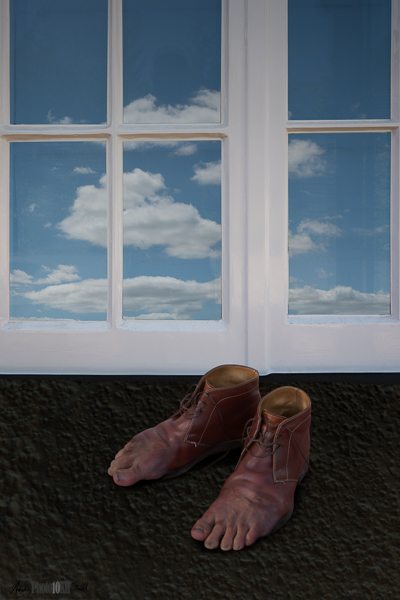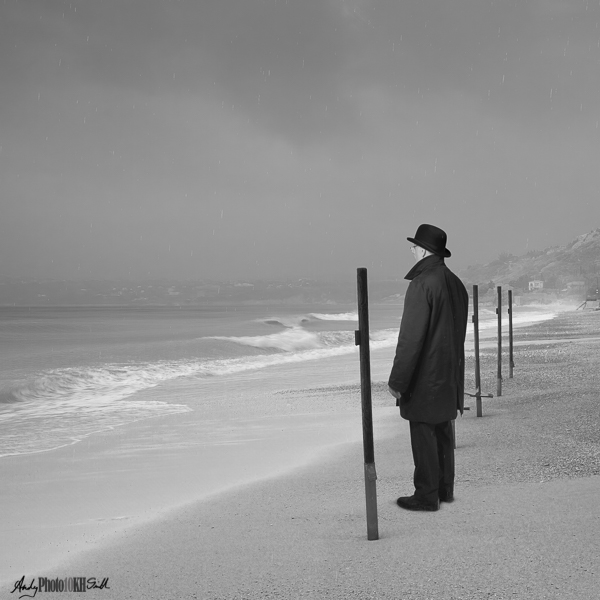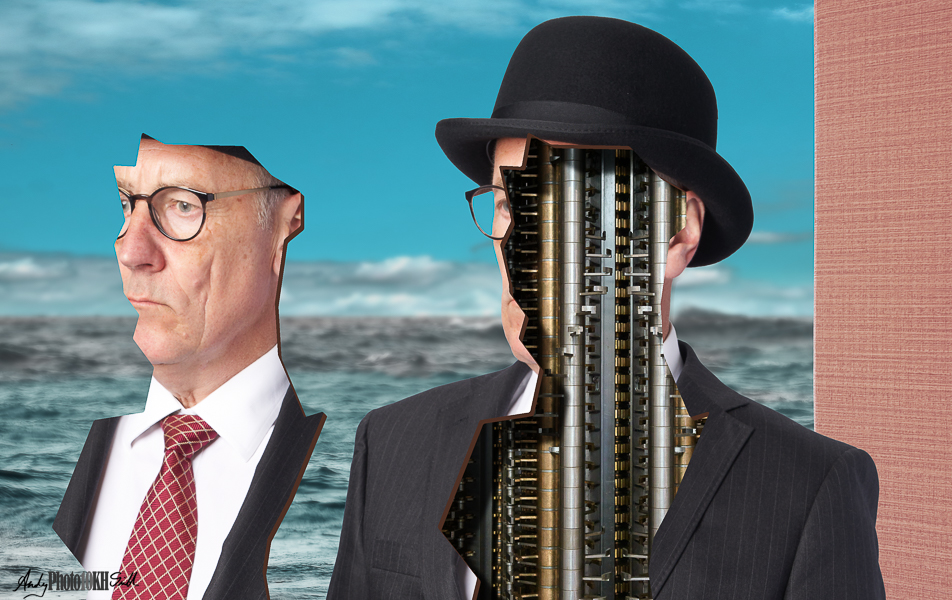
“Surrealism is not a style but a state of mind. It aims to subvert reality.”
Tate Modern, describing the Surrealism Beyond Boarders Exhibition, February 2022.
Definition of Surrealism
Surrealism seeks to create a greater form of art by combining conscious images of the real world with those of the subconscious.
History and Influence on Popular culture
Precursor to Surrealism: Dada
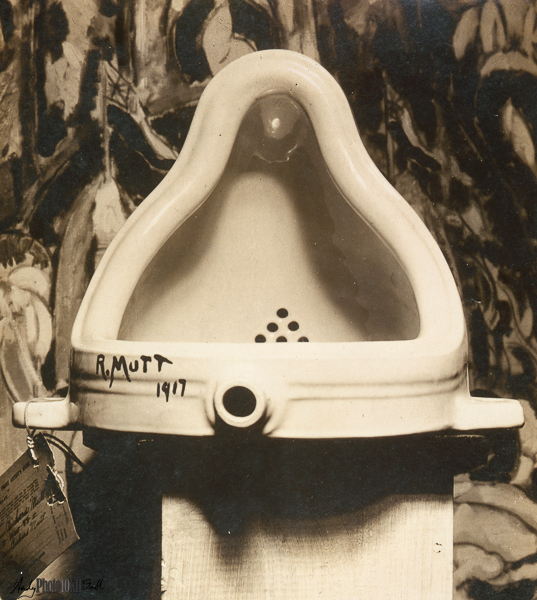
Historically surrealism is a development of Dada. Dada was founded in 1916 in the Cabaret Voltaire in Zurich, a night club for people with both artistic and political intentions, with the goals of:
- reacting against the horrors of World War I with an anti-aesthetic message rejecting the historical principles of art such as realistic depiction and beauty, and instead combining Modernist art movements including cubism, futurism and abstraction
- replacing the Kantian values of logic and rationalism, which the founders felt stifled the human spirit, with intentional irrationality
- shocking the bourgeoisie out of their calm capitalist world, alerting them to the dangers of fascism, and promoting instead a radically left-wing agenda
Dada was an anti-art movement in which irrationality and nonsense were positive attributes. An exemplary work is Marcel Duchamp’s 1917, “Fountain”, urinal (above) exhibited in the name of R. Mutt at the Society of Independent Artists.
To me the most obvious product of Dada was post WWII UK comedy and Monty Python in particular.

Historical Influences outside the Art World
Returning to the premise that both Dada and Surrealism represent a state of mind rather than a style, it is useful to consider the advances in science and philosophy at the time of their conception. Just as the rise of photography threatened the preeminence of the painter for portraiture or landscapes, the art world was both shaken and inspired by the seismic developments in scientific and philosophical at the start of the 20th Century.
Particularly:
- 1901 Sigmund Freud’s “On Dreams” created a popular obsession with the unconscious mind
- 1905-15 Einstein’s theories of relativity and quantum mechanics superseded those of the mundane classical mechanics
- 1917 October Revolution in Russia, seen to validate the communist ideology of Karl Marx & Vladimir Lenin
- Frederich Nietzsche’s declaration that “God is Dead” in Thus Spoke Zarathustra popularised many of the ideas behind existentialism and posited the question of the meaning of human existence without divine purpose.
Automatic Writing and the Exquisite Corpse game
Originally surrealism related to literature. Andre Breton, writer, poet and political activist, author of the surrealist manifesto, sought to replace the conscious with chance, perhaps guided by some spiritual force. For example, the rules for writing a surrealist poem are (roughly):
- select a newspaper article the desired length of the intended poem
- cut out the words/ phrases
- put into a bag and shake
- take out the words one-by-one and diligently record
- admire the fabulous poem you have written, and suggest that anybody who thinks otherwise lacks artistic sensitivity.
Many of the most respected writers of the time indulged these techniques. Sir Arthur Conan Doyle, wrote in his 1918 book “New Revelations” that automatic writing was the result of spirits entering the writer’s body. He and his wife, Lady Doyle, held seances where automatic writing took place.
A more collaborative technique was the exquisite corpse game whereby participants take turns to add words unaware of what has gone before. The name of the game came from the first time it was played:
“The exquisite corpse shall drink the new wine”
Andre Breton on the derivation of the Exquisite Corpse game played at the initial meeting of the surrealists.
Automatic drawing, music or other forms of surrealist art are adaptations of the techniques founded by the surrealist writers. Perhaps unsurprisingly, John Cage was involved in a collaboration with other composers to use these techniques; “Party Pieces” published in 1940. In nearly all other cases, surrealist art is based on an idea from one of the automatic techniques above, a dream or otherwise from the subconscious, and then developed by the conscious mind of a skilled artist.
[My view is that the above are probably effective techniques to overcome “writer’s block” or “blank canvas syndrome”. They provide a starting point from which the accomplished artist produces a work.]
6½ Surrealist Painters
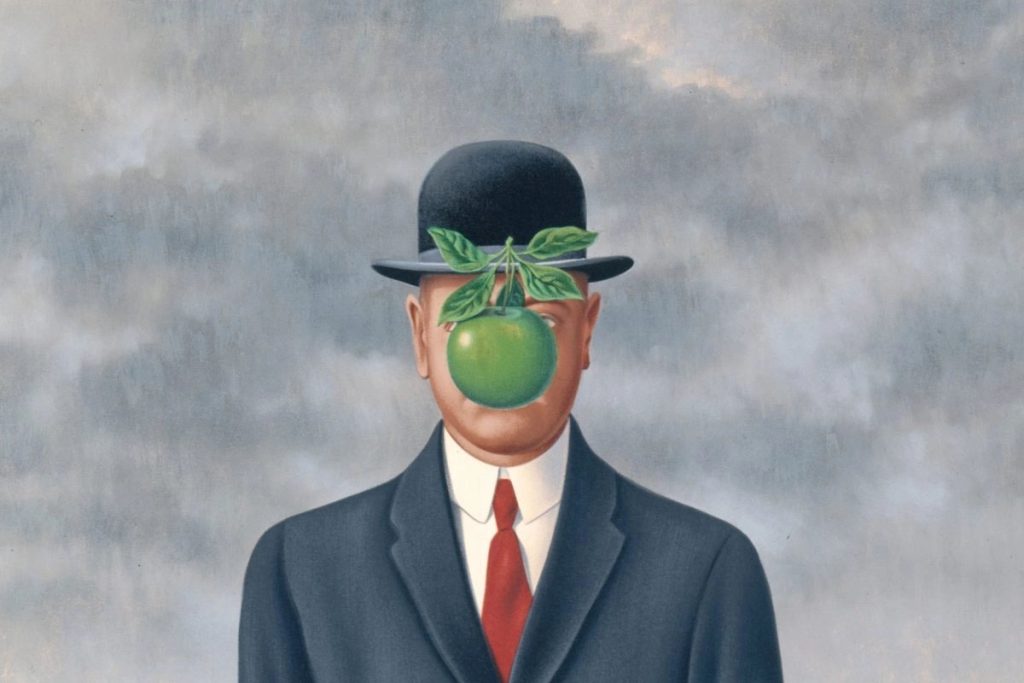
René Magritte
“Everything we see hides another thing, we always want to see what is hidden by what we see.”
– Rene Magritte
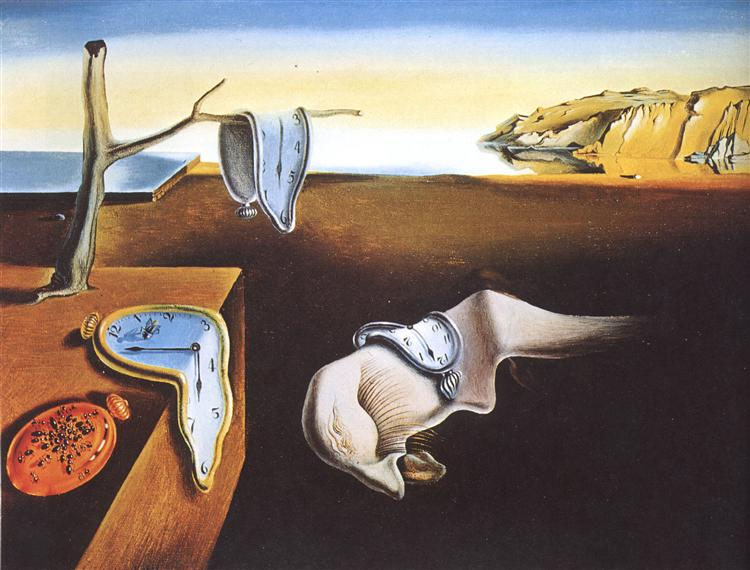
Salvador Dalí
Best known for is 1931 painting “The Persistence of Memory”, a dreamscape featuring melting pocket watches, ants (symbolising decay) and an amorphous central figure thought to be both a self portrait and inspired by a similar figure in Hieronymous Bosche’s “Garden of Earthly Delights” that Dalí is known to have studied. The work reflects the intellectual developments of the age: Sigmund Freud’s Interpretations of Dreams and Einstein’s Theory of Relativity .
Salvador Dalí had a difficult relationship with the surrealists in that he didn’t support their socialist agenda, in fact was very close to Franco the Spanish fascist dictator, and was eventually thrown out of the group for being “too enthusiast about being paid.”
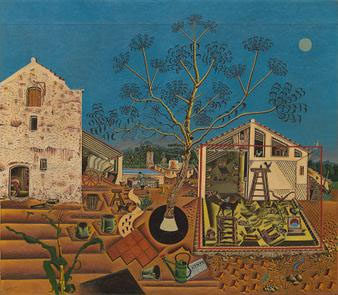
Jean Miro
The Farm
Miro: “a summary of my entire life in the countryside”.
Ernst Hemmingway who bought the painting before either of them were famous said: “It has in it all that you feel about Spain when you are there and all that you feel when you are away and cannot go there. No one else has been able to paint these two very opposing things.”

Marcel Duchamp
Duchamp is a link from Dada, with his “Fountain” (right) to surrealism and on to cubism with his “Nude Descending a Staircase”.
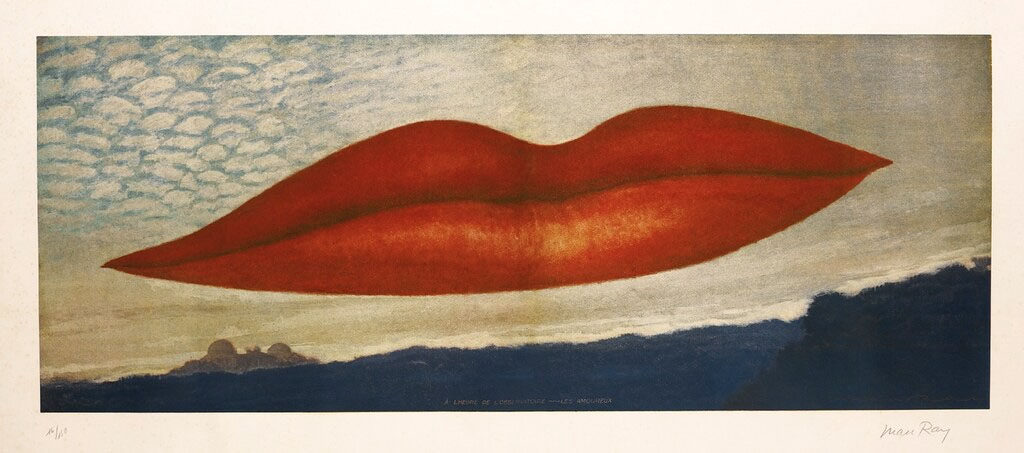
Man Ray
“Nature does not create works of art. It is we, and the faculty of interpretation peculiar to the human mind, that see art.”
― Man Ray
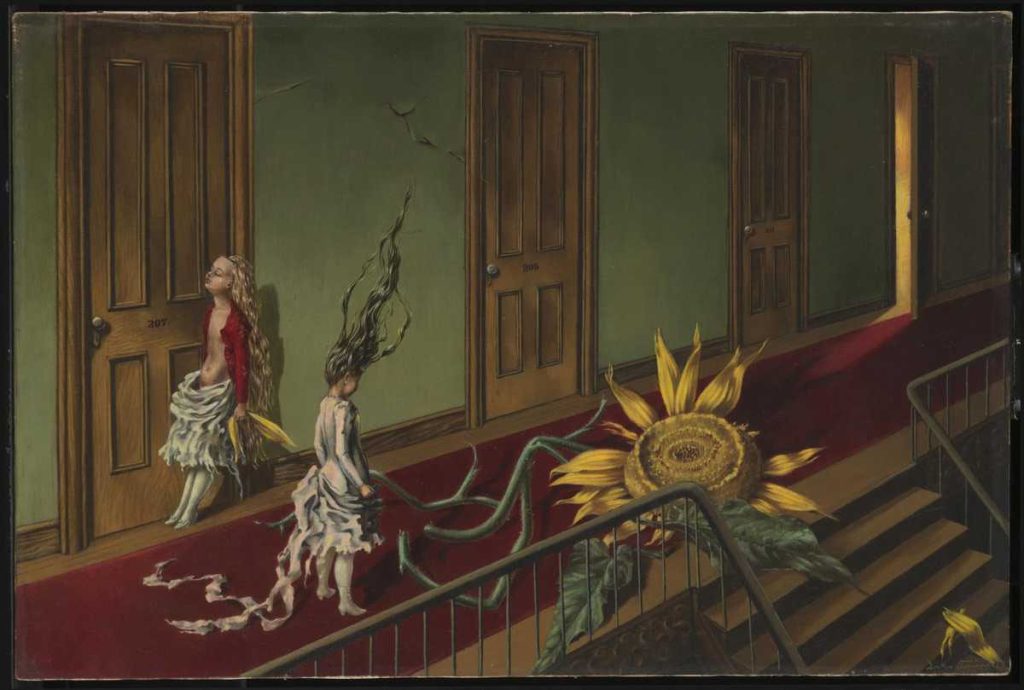
Dorothea Tanning
During their lifetimes Dorothea Tanning often lived in the shadow of her husband Max Ernst. However, I think Tanning’s work is more powerful and has a more enduring appeal.
I have seen the image, Eine Kleine Nachtmusik (1943), right many times.
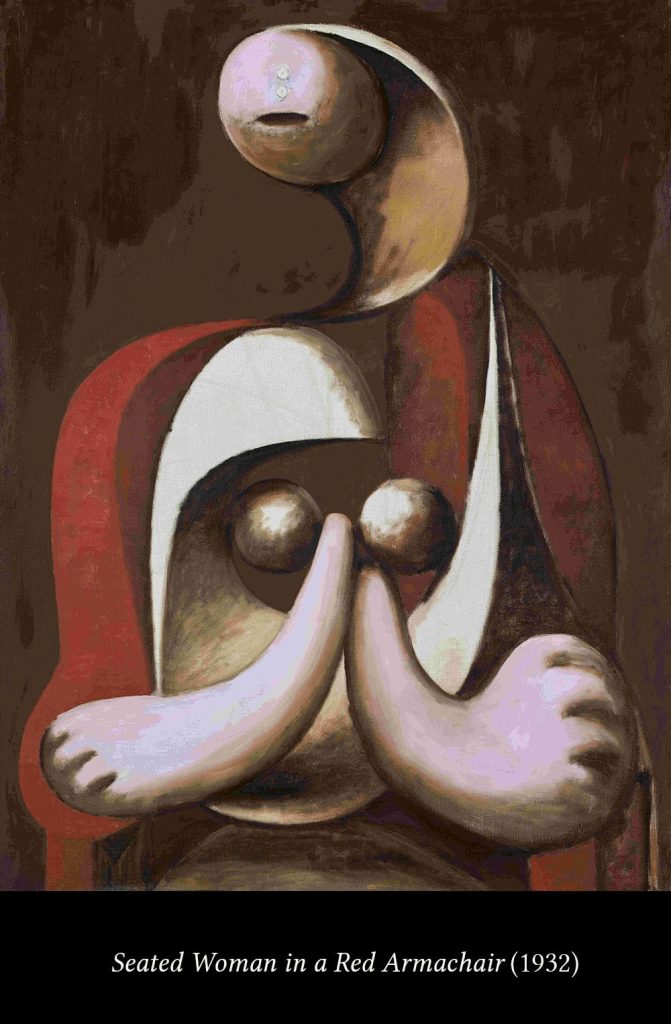
Picasso (a bit)
Although best known for his cubist work, Picasso was an undoubted force in the surrealist movement. 1925 to 1932 is sometimes considered to be Picasso’s surrealist period.
4 Surrealist Photographers
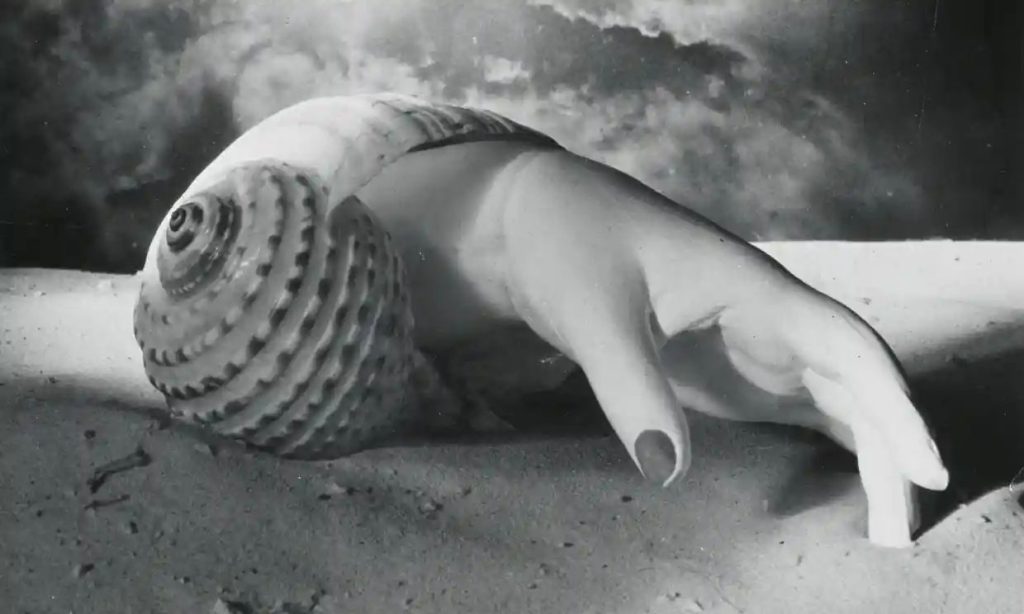
Dora Maar
Before becoming best know as Pablo Picasso’s muse and lover, Dora Maar was a classmate of Henri Cartier-Bresson and had a career as an art photographer. Despite documenting the creation of Picasso’s Guernica in 1937 and creating a number of surrealist photographs often involving Picasso, she was encouraged to give up photography for painting which Picasso considered to be a superior medium.
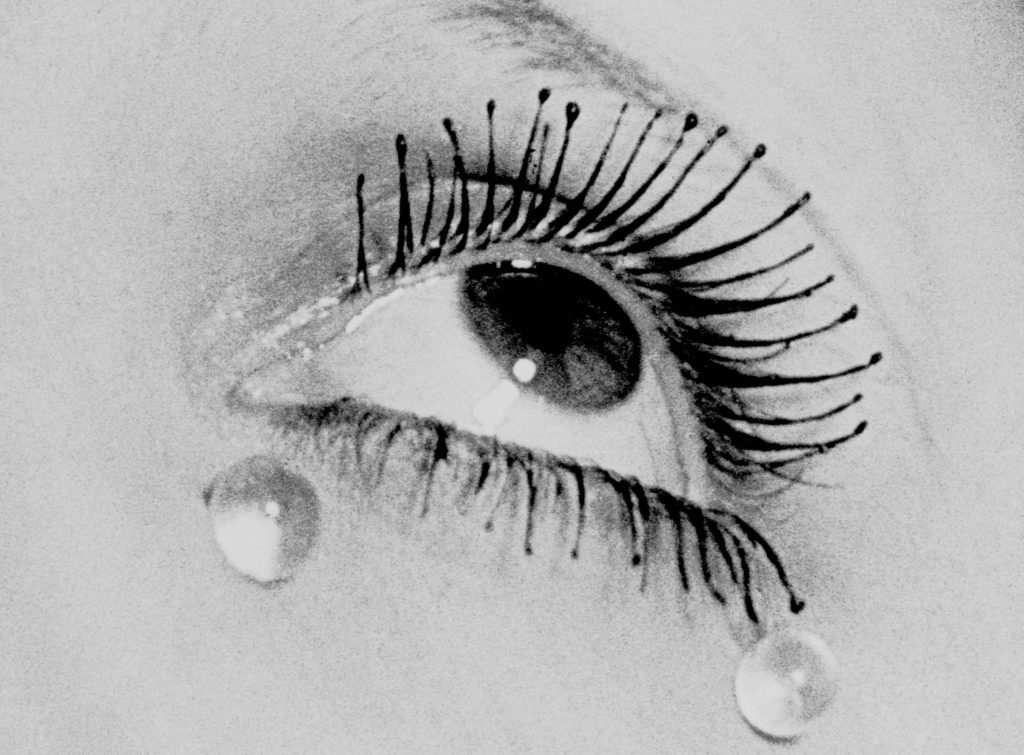
Man Ray
Pioneer of several abstract photographic techniques including the cameraless “Rayographs” and light painting.
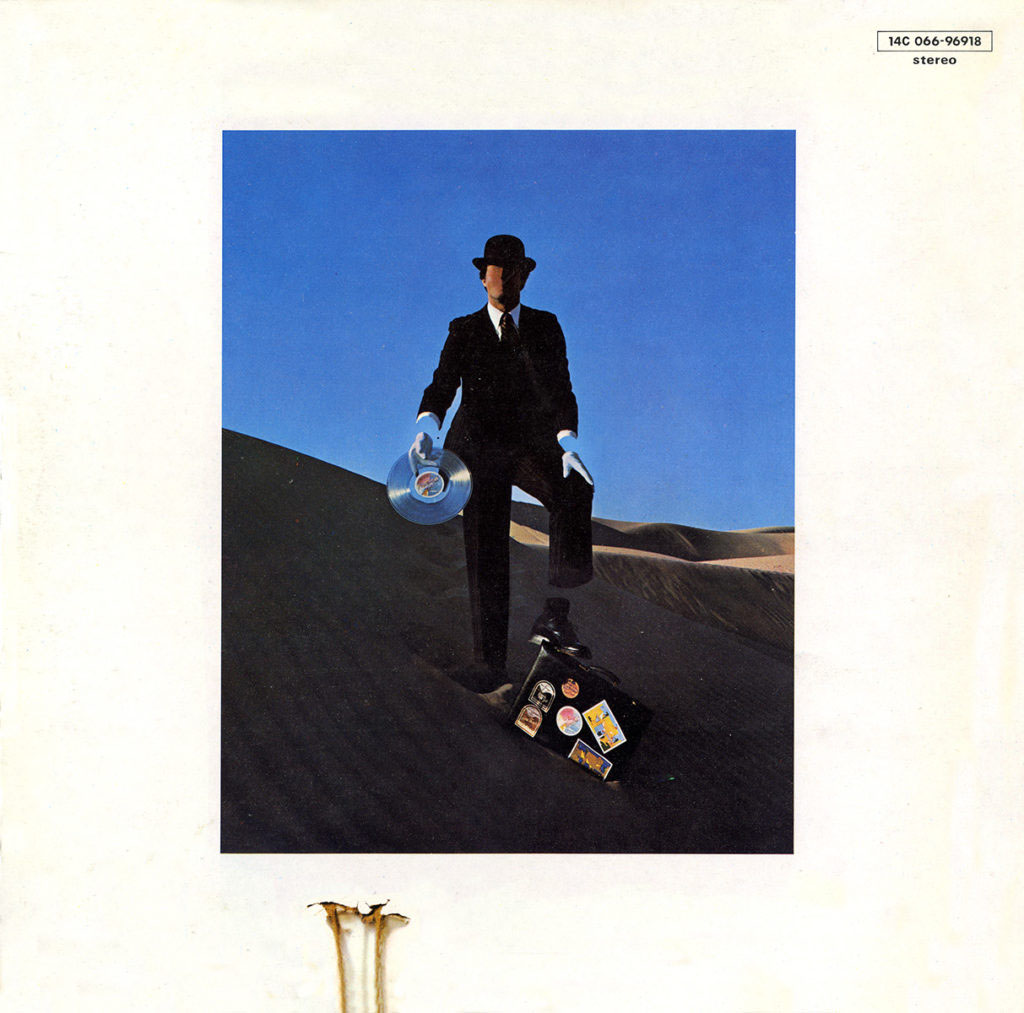
Storm Thorgerson
Born in 1944 (died 2013) he went to school and played rugby with Roger Waters from Pink Floyd, and then when on to design and create some of the band’s most famous album covers. All with a distinctly surrealist flavour.
Right: Pink Floyd’s album (back cover) “Wish You Were Here”
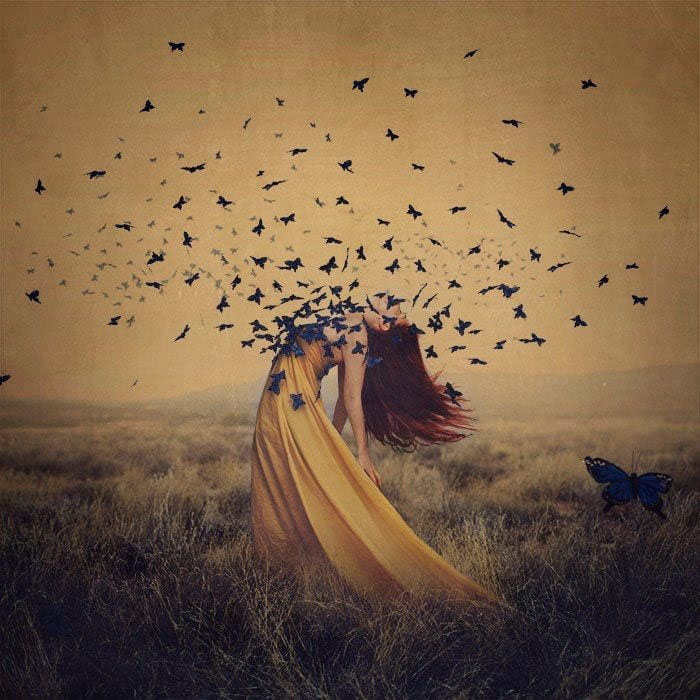
Brook Shaden
When I Googled “Art Photography” in 2018 for my post “First Notes on the History of Photography as an Art Form“, Brook Shaden was the first hit. She clearly fits the definition of a surrealist by creating manipulated images of ordinary subjects to disquieting effect. Born in 1987, she was 2 when Salvador Dalí, last of the surrealist painters, died. So whilst not a contemporary of the Surrealists, she is clearly influenced by the likes of Dorothea Tanning and René Magritte.
Reinterpretation of Surrealist Paintings
A number of surrealist paintings lend themselves to reinterpretation via manipulated photography.

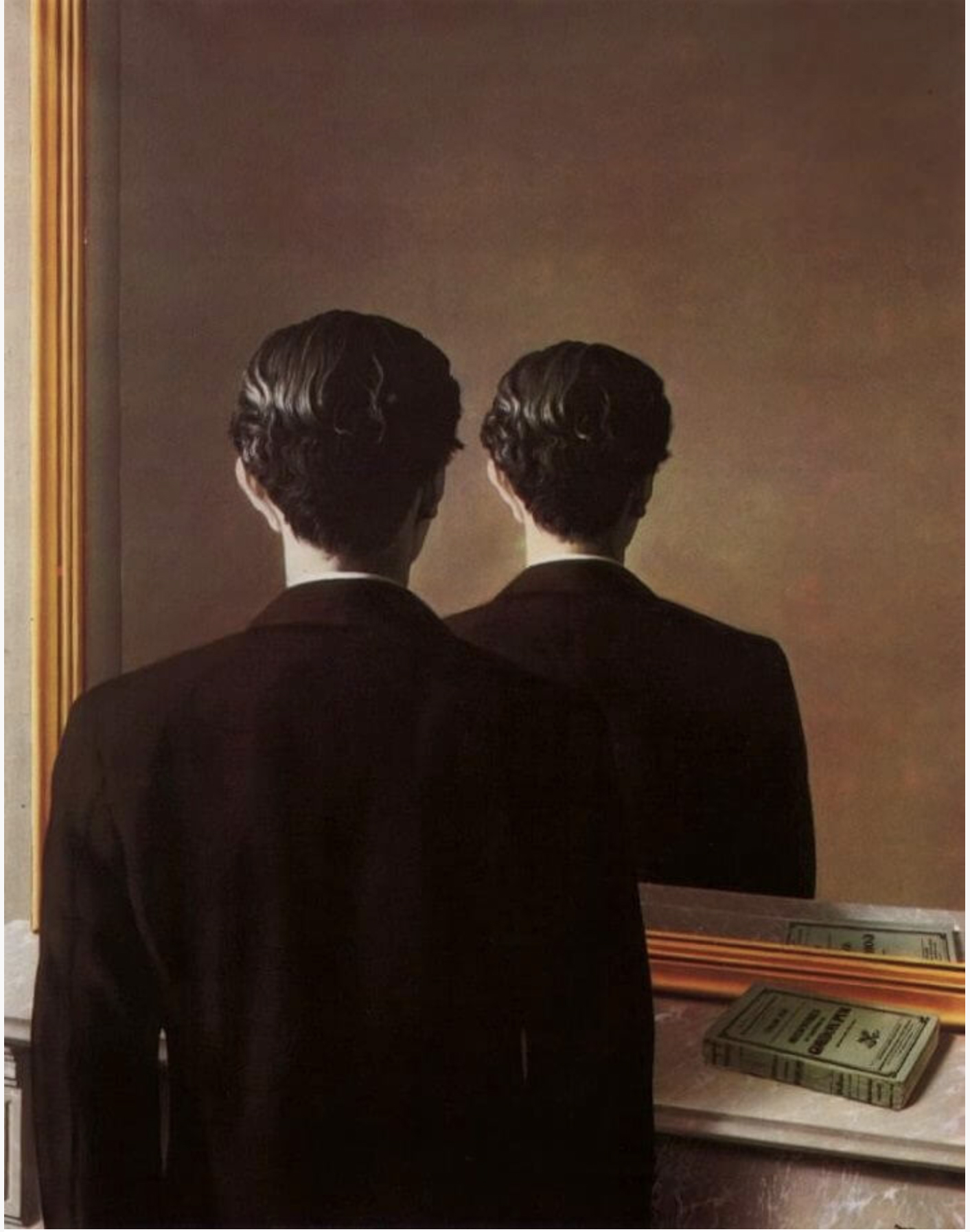 | 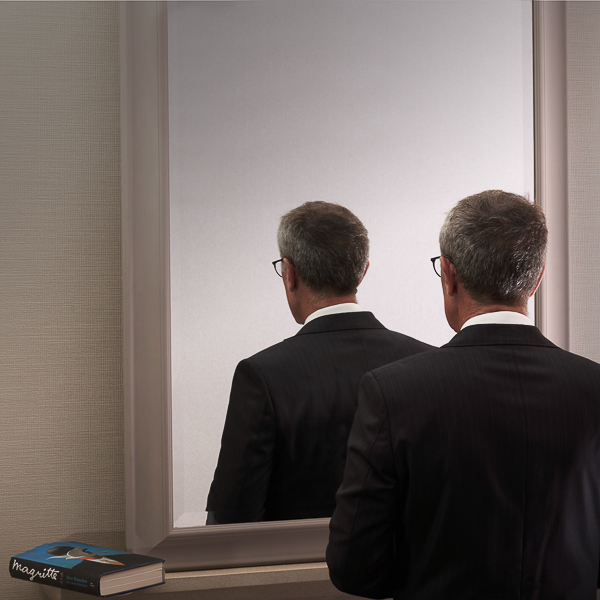 |
| Magritte Original: “Not to be Reproduced” | My reinterpretation: “Magritte Mirror Image” |
Photographic Surrealism
In general the role of the photographer is to give the viewer a new perspective on the world.
Freud’s idea of “the uncanny” to transform the recognisable world into an unfamiliar version of itself to disquieting effect.
The aim is to subvert reality, introduce the element of chance and involvement of the subconscious. This differentiates a great image from the mundane. Other than still-life, photography usually involves an element of chance as elements are beyond the control of the photographer. Street photography is a case in point where unpredictable events can occur just as the photographer is taking a shot.
Examples of surrealist photography
So whilst not strictly surrealist, the following is shot in the style of Rene Magritte
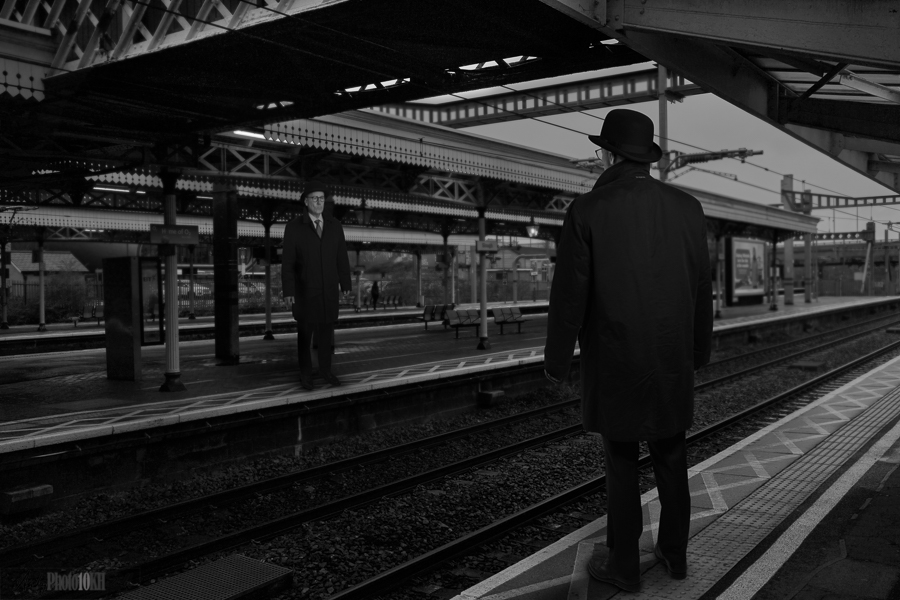
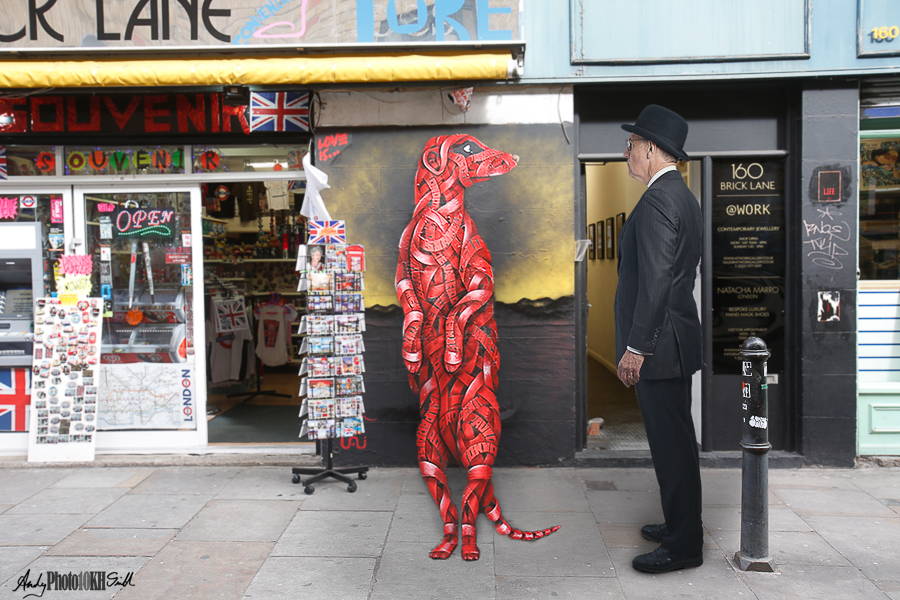
Image of graffitied shop in Brick Lane, London shot by Yin Wong, composition advice from Laurie Turner.
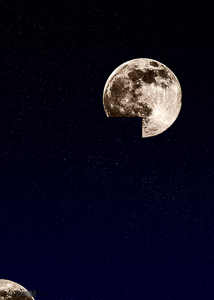
The “Moon Slice” image right is surrealist to the extent that it clearly subverts reality.
The gradient, with almost completely black at the top and slightly lighter blue at the bottom of the image, suggests that the viewer seeing this through earth’s atmosphere
Final Thoughts: Existential Issues of the 2020s
If the Surrealists of the 1920’s were influenced by Freud, Einstein, Nietzsche and the rise of both fascism and communism; what are the seismic issues of 2020s? Candidates must surely include:
- the rise of artificial intelligence, big data and social media meaning that humans no longer hold a monopoly on intelligent thought or societal influence
- discovery of dark matter and dark energy, which constitutes the vast majority of the universe, meaning that the world is again much more complicated and mysterious than previously thought. To use the iceberg analogy, we had previously only seen the tip of reality.
- the shift in power from geographically defined governments to global multinationals; power is increasingly in the hands of the unelected and is difficult for national governments representing the general populace to effectively regulate
- climate change.
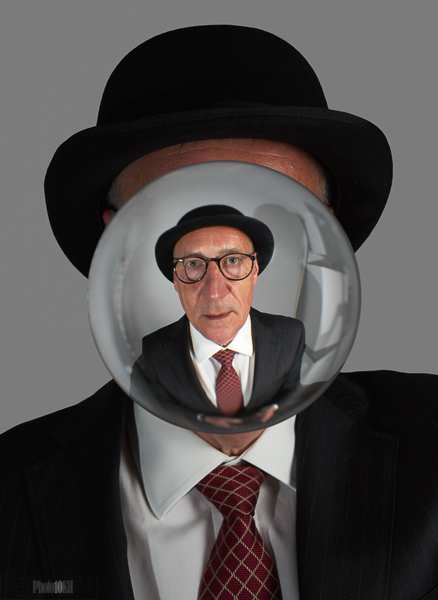
What do you think? Comments below.
